Patreon MUSICARTA - SCALES Premium
Stressed Scale Practice Patterns
~ Contrary Motion ~
Rhythmic stress (emphasis) helps you learn your scales by making you want to ‘keep the notes coming’ until you get to a satisfactory ending note. Stressed scale practice patterns also help you to see and follow patterns – and transpose them.
You will already have studied the first (similar motion) stressed scale practice pattern (SPP) page. Use the nav below to dot around the four-part mini-series.
|
Stressed Scale Practice Patterns (SSPPs) |
Contrary motion symmetrical patterns
Contrary
motion fingering for Group One scales is simple – both hands put thumbs under and
fingers over at the same time.
Patterns in twos
Here are the basic two-octave stressed-in-twos patterns. Notice that they don't have to start or end on the same note.

Patterns in threes
Symmetrical patterns stressed in threes might look like this:
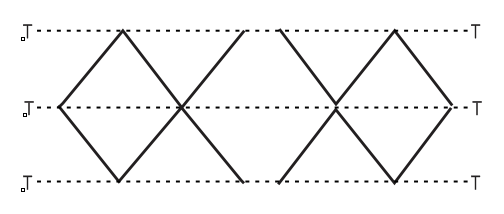
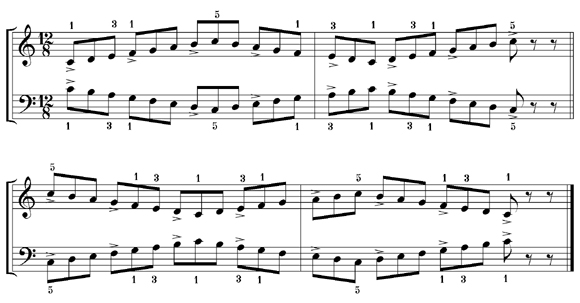
That is immediately followed in the video by this symmetrical pattern stressed in fours.
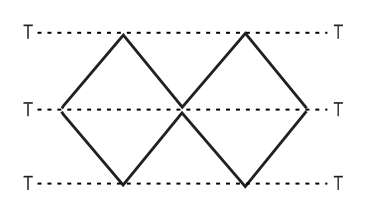
You could start the pattern also from the outside or with the hands an octave further apart, but we'll jump to a more interesting challenge: asymmetric contrary motion patterns.
Asymmetric contrary motion patterns
Start combining 'similar' and 'contrary' motion in your stressed scale
practice patterns. We'll skip straight to stressed-in-threes.
Patterns in threes
Hands starting on the same note and ending on the same note - first performance in the section video, below.
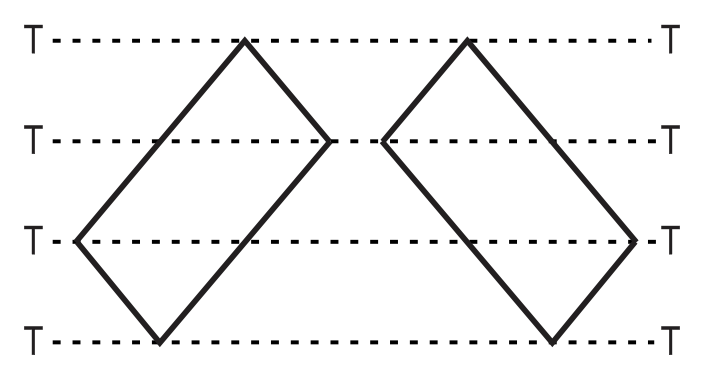
Starting an octave apart offers more possibilities. Study this collection of patterns.
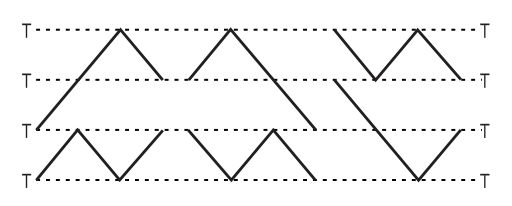
Play from just the contour diagrams if you possibly can.
Study the 'symmetries' of the patterns. The original shape above is first reversed, then turned upside down.
Patterns in fours
Here are some mixed contrary motion patterns in fours.
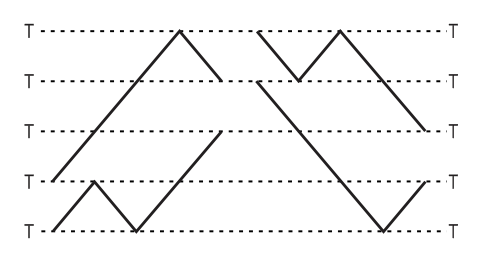
You see that the second half of the pattern is the first half turned upside down.
The video goes straight on to this collection of three shapes.
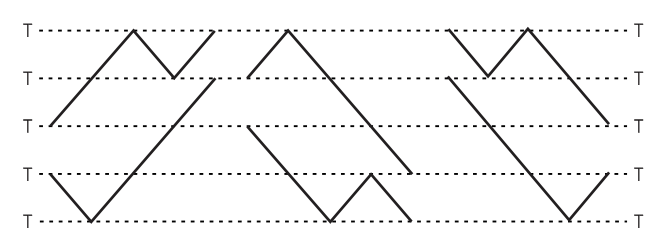
Here, the shape is both both inverted (tuned upside down) and reversed.
Scale practice can become mechanical. Mechanical practice makes for a mechanical musician!
Playing rhythmic scale practice patterns (esp. including contrary motion) from the contour diagrams obliges you to pay close attention.
Paying attention as you practice makes you a better musician!
Patterns in sixes
These patterns covers a total of six octaves in length, so stressing in sixes makes it 'come out right'. It's a long time to 'keep going'!
Count "One-and-a-two-and-a Two-and-a-two-and-a..."
(The pattern will also 'come out' if you count in threes.)

The pattern is reversed, then inverted.
Here’s another contrary motion stressed in sixes. The hands individually only cover a span (height) of two octaves, but six octaves in length – that’s why the stress in sixes brings the pattern out right in the end.
The second half is both inverted and reversed in one operation.

Extend your scale practice with SPPs in thirds, tenths and sixes - the harmonious intervals.
Transposing the patterns
Once you can play the patterns comfortably in C, you should play them in other keys.
The keys demonstrated here represent the two-handed scale fingering groups.
- 2H/SFG1: A major;
- 2H/SFG2: E flat major;
- 2H/SFG3: F or B major;
- 2H/SFG4: D flat or F sharp major.
You yourself should transpose the SSPPs into other keys in those groups.
Symmetrical patterns in twos
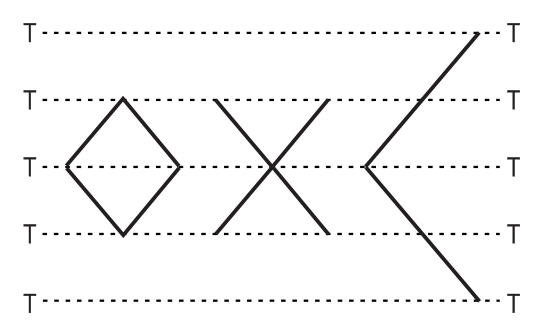 |
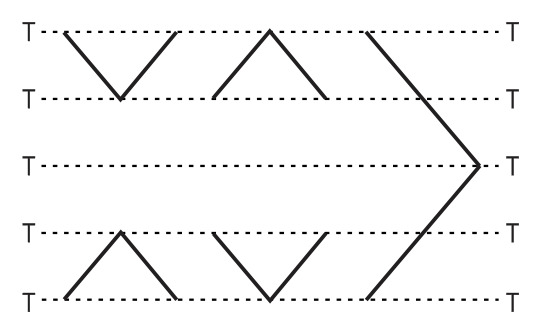 |
Play the patterns in twos in F and E flat majors.
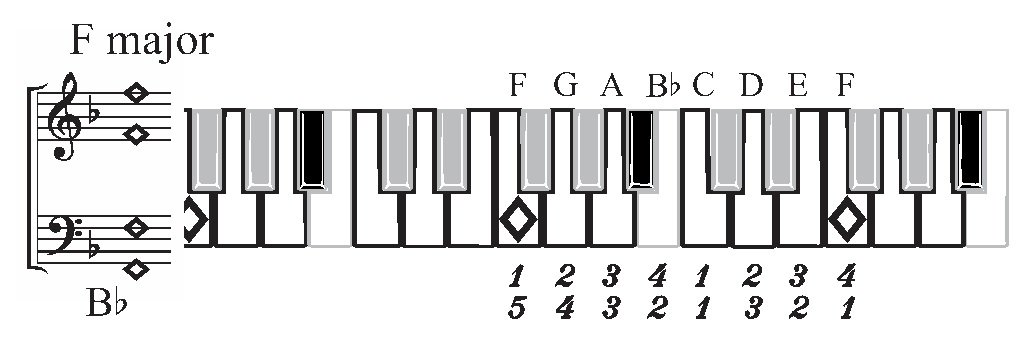
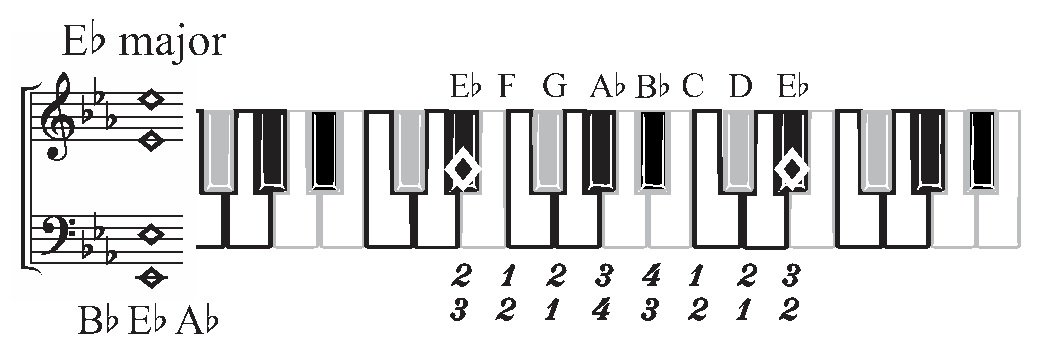
Symmetrical patterns in threes and fours
 |
 |
Play the symmetrical in-threes and in-fours patterns in B and A majors.


Asymmetrical patterns in threes
 |
 |
Play the asymmetrical patterns in threes - all the patterns above - in E flat

Asymmetrical patterns in fours
 |
 |
Play the asymmetrical patterns in fours - all the patterns above - in F major.

Asymmetrical patterns in sixes
Play the first asymmetrical pattern in sixes in Db.


Play the second asymmetrical pattern in sixes in B.


Now go on to play the SSPPs in thirds, sixths and tenths, or use the nav below to access another page in the mini-series.
|
Stressed Scale Practice Patterns (SSPPs) |
Thanks for practicing with Musicarta! Come back soon!
|
Musicarta Patreon
SCALES SERIES
Reference
Scale fingering
Scale Practice Patterns (SPPs)
Scale-tone practice patterns (STPPs)
Chromatic Scales
Diminished Scales
|
The MusicartaA methodical approach to keyboard syncopation for
|
PUBLICATIONS
exciting keyboard
creativity courses
CHORDS 101
WORKBOOK

~HANON~
video course

Musicarta
Patreon
PENTATONICS
WORKBOOK
video course

Creative Keyboard
video course

BEAT AND RHYTHM
WORKBOOK

- Volume 1 -

12-BAR PIANO
STYLES WORKBOOK

MUSICARTA MODES
WORKBOOK

PIANO STYLE

CANON PROJECT
video course

VARIATIONS
video course


- Piano Solo -
video course

- Piano Solo -


YouTube playlists





 THE LOGO
THE LOGO
